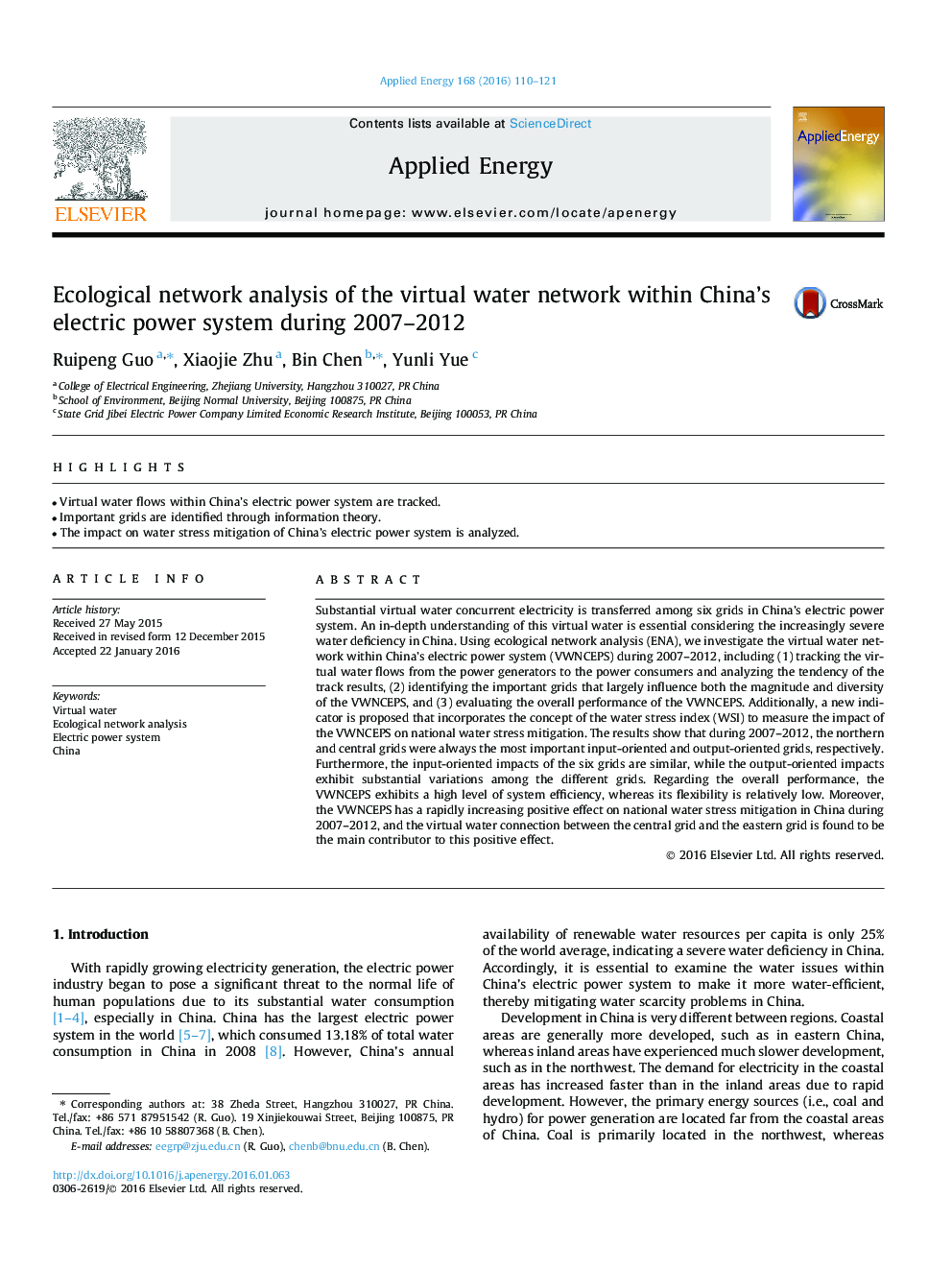| Article ID | Journal | Published Year | Pages | File Type |
|---|---|---|---|---|
| 6683689 | Applied Energy | 2016 | 12 Pages |
Abstract
Substantial virtual water concurrent electricity is transferred among six grids in China's electric power system. An in-depth understanding of this virtual water is essential considering the increasingly severe water deficiency in China. Using ecological network analysis (ENA), we investigate the virtual water network within China's electric power system (VWNCEPS) during 2007-2012, including (1) tracking the virtual water flows from the power generators to the power consumers and analyzing the tendency of the track results, (2) identifying the important grids that largely influence both the magnitude and diversity of the VWNCEPS, and (3) evaluating the overall performance of the VWNCEPS. Additionally, a new indicator is proposed that incorporates the concept of the water stress index (WSI) to measure the impact of the VWNCEPS on national water stress mitigation. The results show that during 2007-2012, the northern and central grids were always the most important input-oriented and output-oriented grids, respectively. Furthermore, the input-oriented impacts of the six grids are similar, while the output-oriented impacts exhibit substantial variations among the different grids. Regarding the overall performance, the VWNCEPS exhibits a high level of system efficiency, whereas its flexibility is relatively low. Moreover, the VWNCEPS has a rapidly increasing positive effect on national water stress mitigation in China during 2007-2012, and the virtual water connection between the central grid and the eastern grid is found to be the main contributor to this positive effect.
Related Topics
Physical Sciences and Engineering
Energy
Energy Engineering and Power Technology
Authors
Ruipeng Guo, Xiaojie Zhu, Bin Chen, Yunli Yue,
